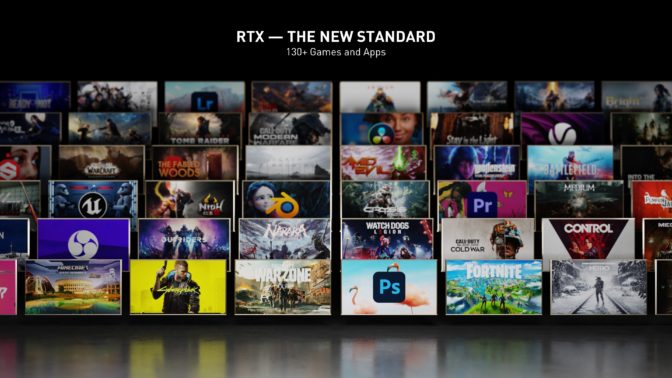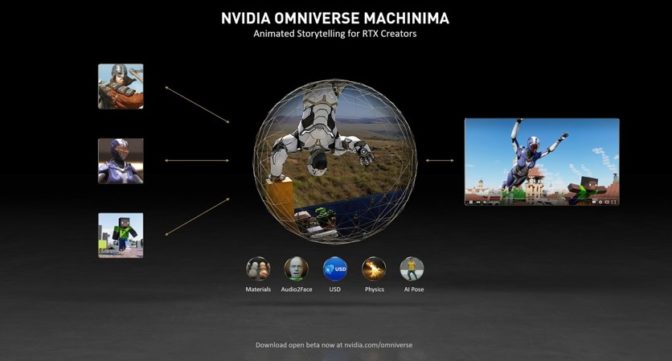The post Microsoft turns attention to multi-cloud and AI with Azure updates appeared first on The AI Blog.
New Courses: Machine Learning Engineering for Production
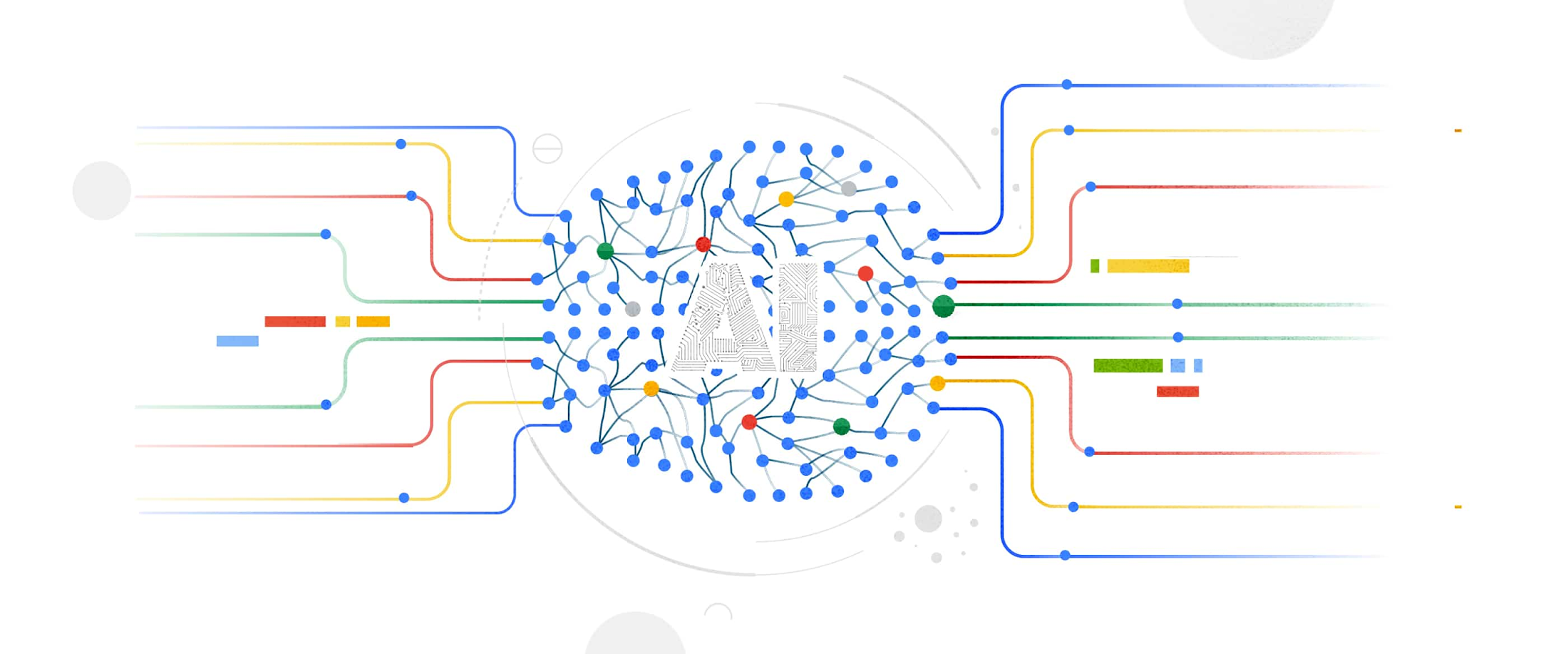
Posted by Robert Crowe and Jocelyn Becker
Have you mastered the art of building and training ML models, and are now ready to use them in a production deployment for a product or service? If so, we have a new set of courses to get you going. Built as a collaboration between the TensorFlow team, Andrew Ng, and deeplearning.ai, the new set of courses are launching as a specialization on Coursera: The Machine Learning Engineering for Production (MLOps) specialization.
The new specialization builds on the foundational knowledge taught in the popular specialization, DeepLearning.AI TensorFlow Developer Professional Certificate, that teaches how to build machine learning models with TensorFlow. The new MLOps specialization kicks off with an introductory course taught by Andrew Ng, followed by courses taught by Robert Crowe and Laurence Moroney that dive into the details of getting your models out to users.
Every lesson comes with plenty of hands-on exercises that give you practice at preparing your data, and training and deploying models.
By the end of the specialization, you’ll be ready to design and deploy an ML production system end-to-end. You’ll understand project scoping, data needs, modeling strategies, and deployment requirements. You’ll know how to optimize your data, models, and infrastructure to manage costs. You’ll know how to validate the integrity of your data to get it ready for production use, and then prototype, develop, and deploy your machine learning models, monitor the outcomes, and update the datasets and retrain the models continuously.
You’ll learn how to implement feature engineering, transformation, and selection with TFX as well as how to use analytics to address model fairness and explainability issues, and how to mitigate bottlenecks. You’ll also explore different scenarios and case studies of ML in practice, from personalization systems to automated vehicles.
 |
| You’ll learn how processing requirements are different in deployment than in training |
 |
| You’ll learn about different tools and platforms for deploying your machine learning systems. |
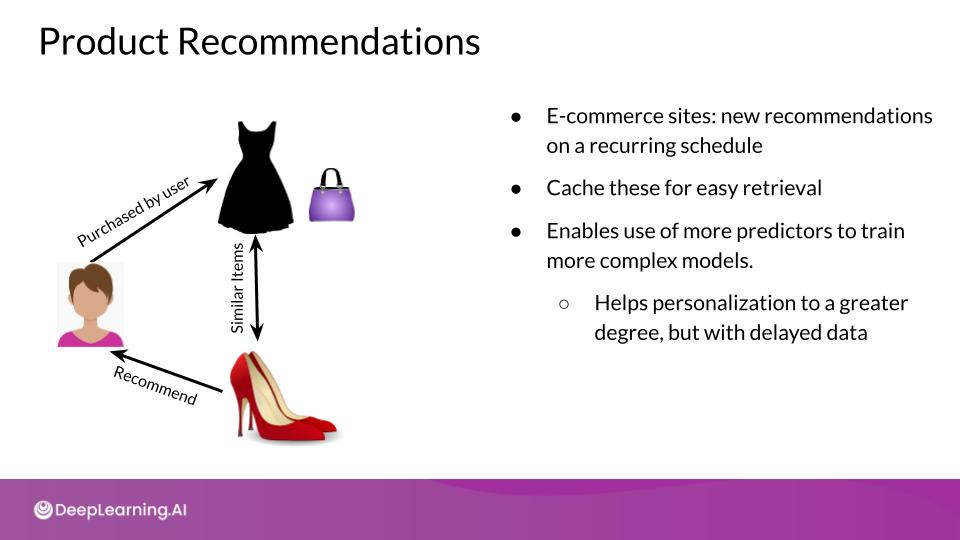 |
| A common use of ML in production is personalization systems for product recommendations. |
 |
| A cutting edge use of ML in practice is to guide automated vehicles. |
Despite the growing recognition of AI/ML as a crucial pillar of digital transformation, successful ML deployments are a bottleneck for getting value from AI. For example, 72% of a cohort of organizations that began AI pilots before 2019 haven’t deployed even a single application in production. A survey by Algorithmia of the state of enterprise machine learning found that 55% of companies surveyed haven’t deployed an ML model.
Models don’t make it into production and if they do, they break because they fail to adapt to changes in the environment. Deloitte identified lack of talent and integration issues as factors that can stall or derail AI initiatives. This is where ML engineering and MLOps are essential. ML engineering provides a superset of the discipline of software engineering that handles the unique complexities of the practical applications of ML. MLOps is a methodology for ML engineering that unifies ML system development (the ML element) with ML system operations (the Ops element).
Unfortunately, job candidates with ML engineering and MLOps skills are relatively hard to find and expensive to hire. Our new MLOps specialization teaches a broad range of many of the skills necessary to work in this field, and will help prepare developers for current and future workplace challenges. We believe that this is a valuable contribution to the ML community, and we’re excited to make it available.
Enroll today to develop your machine learning engineering skills, and learn how to roll out your ML models to benefit your company and your users.
Microsoft Azure Announces General Availability of NVIDIA A100 GPU VMs
Microsoft Azure has announced the general availability of the ND A100 v4 VM series, their most powerful virtual machines for supercomputer-class AI and HPC workloads, powered by NVIDIA A100 Tensor Core GPUs and NVIDIA HDR InfiniBand.
NVIDIA collaborated with Azure to architect this new scale-up and scale-out AI platform, which brings together groundbreaking NVIDIA Ampere architecture GPUs, NVIDIA networking technology and the power of Azure’s high-performance interconnect and virtual machine fabric to make AI supercomputing accessible to everyone.
When solving grand challenges in AI and HPC, scale is everything. Natural language processing, recommendation systems, healthcare research, drug discovery and energy, among other areas, have all seen tremendous progress enabled by accelerated computing.
Much of that progress has come from applications operating at massive scale. To accelerate this trend, applications need to run on architecture that is flexible, accessible and can both scale up and scale out.
The ND A100 v4 VM brings together eight NVIDIA A100 GPUs in a single VM with the NVIDIA HDR InfiniBand that enables 200Gb/s data bandwidth per GPU. That’s a massive 1.6 Tb/s of interconnect bandwidth per VM.
And, for the most demanding AI and HPC workloads, these can be further scaled out to thousands of NVIDIA A100 GPUs under the same low-latency InfiniBand fabric, delivering both the compute and networking capabilities for multi-node distributed computing.
Ready for Developers
Developers have multiple options to get the most performance out of the NVIDIA A100 GPUs in the ND A100 v4 VM for their applications, both for application development and managing infrastructure once those applications are deployed.
To simplify and speed up development, the NVIDIA NGC catalog offers ready-to-use GPU-optimized application frameworks, containers, pre-trained models, libraries, SDKs and Helm charts. With the prebuilt NVIDIA GPU-optimized Image for AI and HPC on the Azure Marketplace, developers can get started with GPU-accelerated software from the NGC catalog with just a few clicks.
The ND A100 v4 VMs are also supported in the Azure Machine Learning service for interactive AI development, distributed training, batch inferencing and automation with ML Ops.
Deploying machine learning pipelines in production with ND A100 v4 VMs is further simplified using the NVIDIA Triton Inference Server, an open-source inference serving application that’s integrated with Azure ML to maximize both GPU and CPU performance and utilization to help minimize the operational costs of deployment.
Developers and infrastructure managers will soon also be able to use Azure Kubernetes Service, a fully managed Kubernetes service to deploy and manage containerized applications on the ND A100 v4 VMs, with NVIDIA A100 GPUs.
Learn more about the ND A100 v4 VMs on Microsoft Azure and get started with building innovative solutions on the cloud.
For more, watch the GTC21 talk I co-presented on “Azure: Empowering the World with High-Ambition AI and HPC” with Girish Bablani, corporate vice president of Microsoft.
The post Microsoft Azure Announces General Availability of NVIDIA A100 GPU VMs appeared first on The Official NVIDIA Blog.
App-full: SHIELD TV Now Streaming More Hit Movies and Shows with Apple TV
The streaming device with the most 4K HDR content available now has even more as Apple TV joins the lineup on NVIDIA SHIELD.
Starting today, SHIELD owners can stream the Apple TV app, including Apple TV+, and its impressive lineup of award-winning series, compelling dramas, groundbreaking documentaries, kids’ shows, comedies and more.
The Apple TV app features Apple TV+, Apple’s video subscription service featuring Apple Originals, including series like Ted Lasso, The Morning Show, For All Mankind and Servant; as well as movies like Greyhound, Palmer and Wolfwalkers. With SHIELD TV, they can be enjoyed in stunning Dolby Vision — a combination that offers beautiful 4K HDR picture quality with remarkable colors, sharper contrasts and incredible brightness. Dolby Atmos is also supported, unlocking richer and more immersive sound. Together, they deliver the best possible cinematic experience.
Apple TV channels are also on the Apple TV app, such as AMC+, Paramount+ and Starz, and watch ad-free and on demand, directly on the Apple TV app. Through Family Sharing, up to six family members can share subscriptions to Apple TV channels using their personal Apple ID and password. And you can enjoy personalized and curated recommendations and access your library of movies and shows purchased from Apple.
Apple TV also works with the built-in Google Assistant on SHIELD for hands-free control of your entertainment. Use simple voice commands to pause, rewind, fast-forward and more.
To search for content using voice, say “Hey Google,” or press the microphone button, and call out a genre or specific show you’d like to watch. New Apple Originals arrive every month, so there’s always something binge-worthy to watch.
And with SHIELD’s amazing AI-upscaling technology even HD content gets an eye-popping boost to 4K.
Mark your calendars for the debut of Lisey’s Story (June 4), Home Before Dark season 2 (June 11), Physical (June 18), Central Park season 2 (June 25) and the triumphant return of Ted Lasso (July 23).
Download Apple TV from the Google Play store. There’s even a free seven-day Apple TV+ trial available for new subscribers.
SHIELD Gets Even Better
SHIELD is the faster, smarter streaming media player. It’s built on Android TV and supported by industry-leading software updates, includes the latest audio and visual technology and offers the most 4K HDR movies and shows.
With HBO Max delivering new 4K HDR Dolby Vision and Dolby Atmos cinematic releases every month and YouTube TV adding more channels and live sports from Hulu, there’s never been a better time to pick up a SHIELD TV.
This includes those who like to game before they watch: For a limited time, get a three-month GeForce NOW Priority Membership with the purchase of a SHIELD TV. GeForce NOW instantly transforms SHIELD TVs — plus PCs, Macs, Chromebooks or mobile devices — into the PC gaming rigs gamers have long dreamed of.
For streaming, gaming or both, SHIELD delivers.
The post App-full: SHIELD TV Now Streaming More Hit Movies and Shows with Apple TV appeared first on The Official NVIDIA Blog.
NVIDIA Brings Gaming, Enterprise Innovations to COMPUTEX 2021
Touching on gaming, enterprise AI — and the advances underpinning both — NVIDIA’s Jeff Fisher and Manuvir Das Tuesday delivered a news-packed virtual keynote at COMPUTEX 2021.
Fisher, senior vice president of NVIDIA’s GeForce business, announced a pair of powerful new gaming GPUs — the GeForce RTX 3080 Ti and GeForce 3070 Ti. He spoke about NVIDIA’s role in powerful new laptops for gamers and creators. And he detailed the fast-growing adoption of NVIDIA RTX technologies in a growing roster of games.
Das, head of enterprise computing, announced that dozens of new servers are certified to run NVIDIA AI Enterprise software, marking a rapid expansion of the NVIDIA-Certified Systems program, which has grown to include more than 50 systems from the world’s leading manufacturers.
The joint keynote began with a flourish, with Fisher announcing a unique Microsoft Flight Simulator mod paying tribute to Taipei. “We miss Taipei and wish we could be there in person for COMPUTEX,” Fisher said. “So we created Taipei City in Microsoft Flight Sim and flew in virtually on a GeForce RTX 3080.”

New Gaming Flagship, New Laptops, RTX Momentum
Fisher began the talk by touching on how gaming has transformed entertainment. NVIDIA RTX technologies are changing everything, not just for gamers, but for 150 million creators, broadcasters and students, Fisher explained.
With over 130 of the top games and creative apps accelerated by NVIDIA GPUs, RTX is the new standard, he said, with NVIDIA DLSS, Reflex and ray tracing boosting image quality and performance on a long list of game franchises. Fisher also announced several new RTX games, including DOOM Eternal, Red Dead Redemption 2, Rainbow Six Siege, Icarus and DYING: 1983.
RTX accelerates the No. 1 photography app, the No. 1 video editing app and the No. 1 broadcast app. For gamers, RTX is powering the No. 1 battle royale, the No. 1 RPG and the No. 1 best-selling game of all time. Soon 12 of the top 15 competitive shooters will feature NVIDIA Reflex, with the addition of Escape from Tarkov, CrossFire HD and War Thunder, Fisher said.
And GeForce laptops are the fastest-growing gaming platform for such experiences. It’s a platform now fueled top to bottom by RTX, third-generation Max-Q technologies and the magic of DLSS, which uses AI-powered Tensor Cores to boost frame rates.
This year brought a record launch for RTX laptops, with over 140 models from every manufacturer. Starting at $799 and featuring Max-Q, a collection of NVIDIA technologies for making gaming laptops thinner, lighter and more powerful, “there is now an RTX laptop for every gamer,” Fisher said.
Highlighting an example of that work, Fisher announced the Alienware x15, an ultra-thin, GeForce RTX 3080 laptop. Powered by Max-Q technologies including Dynamic Boost 2.0, WhisperMode 2.0 and Advanced Optimus, and featuring a 1440p display, “it is the world’s most powerful sub-16mm 15-inch gaming laptop,” Fisher said.
For 3D designers, video editors and photographers, NVIDIA developed NVIDIA Studio. These are specially configured systems, optimized and tested for creator workflows, and supported with a monthly cadence of Studio Drivers, Fisher said.
Fisher announced a pair of new Studio laptops from HP and Acer. The 14-inch HP Envy brings the capabilities of RTX to an ultra-portable laptop that’s “great for students and creators on the go,” Fisher said. The new Acer ConceptD offers a variety of traditional clamshell options and an Ezel sketch board design to give creators even more flexibility, Fisher said.
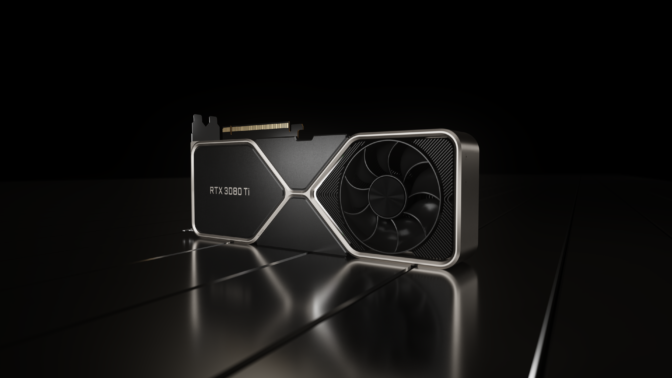
Based on the NVIDIA Ampere architecture, with second-generation RT Cores and third-generation Tensor Cores, Ampere is “our greatest generational leap ever,” Fisher said. “The 80 Ti class of GPUs represents the best of our gaming lineup.”
The GPU comes as the production value of games continues to march forward, Fisher explained. “New titles like Cyberpunk 2077 and Watch Dogs: Legion have elevated realism, demanding even more of the GPU,” he said.
Fisher said the RTX 3080 Ti is 1.5x faster than its predecessor and tears through the latest games with all the settings cranked up. And the RTX 3070 Ti is 1.5x faster than a 2070 SUPER, thanks to more cores and superfast GDDR6X memory.
GeForce RTX 3080 Ti availability will begin on June 3, starting at $1,199. GeForce RTX 3070 Ti availability begins on June 10, starting at $599.
“Every person born today is a gamer,” Fisher said. “We have an amazing future ahead, and we look forward to building it with all of you.”
‘AI for Every Company’
Following Fisher, Das spoke in detail about the three essential ingredients built by NVIDIA: the hardware foundation from which to make any system, the software platform for artificial intelligence and the software platform for collaborative design.
“It is time to democratize AI by bringing its transformative power to every company and its customers,” Das said.
To help system manufacturers create AI-optimized designs and to ensure that the systems can be relied on by customers, NVIDIA made NVIDIA-Certified, a program for servers that incorporate GPU acceleration, Das explained.

Das announced dozens of new servers certified to run NVIDIA AI Enterprise software.
Coming from Advantech, Altos, ASRock Rack, ASUS, Dell Technologies, GIGABYTE, Hewlett Packard Enterprise, Lenovo, QCT, Supermicro and others, the growing roster of NVIDIA-Certified Systems include some of the highest-volume x86 servers used in mainstream data centers. They bring the power of AI to a wide range of industries including healthcare, manufacturing, retail and financial services.
Das announced that NVIDIA will expand its NVIDIA-Certified systems program to systems with NVIDIA BlueField DPUs. Several of the world’s top server manufacturers — including ASUS, Dell Technologies, GIGABYTE, QCT and Supermicro — today at COMPUTEX 2021 announced new systems powered by NVIDIA BlueField-2 data processing units.
“Going forward, the DPU will be an essential component of every server, in the data center and at the edge,” Das said.
Das also announced the NVIDIA-Certified System program will expand to support accelerated systems with Arm-based host CPUs. In addition, along with NVIDIA partner GIGABYTE, Das announced a devkit can be used by application developers to prepare their GPU-accelerated apps for Arm.
“As the GPU and DPU accelerators take on more of the compute workload for AI, it becomes useful to view the host CPU as an orchestrator, more so than as the compute engine,” Das said.
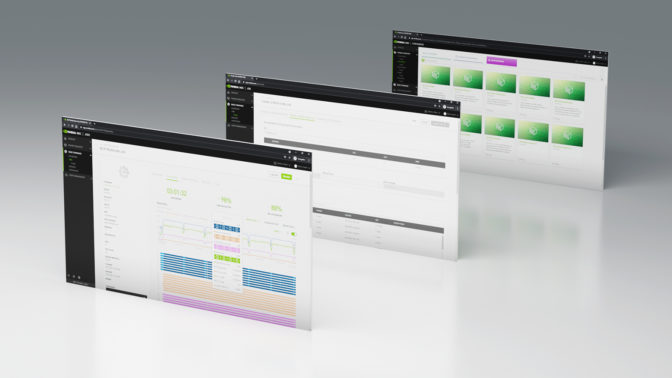
Building on NVIDIA’s work to enable powerful GPU instances in the cloud, Das announced that Google Cloud is among the first cloud service providers planning to enable NVIDIA’s powerful Base Command Platform for the management and orchestration of clusters in their cloud instances.
The software is designed for large-scale, multi-user and multi-team AI development workflows hosted either on premises or in the cloud. It enables numerous researchers and data scientists to simultaneously work on accelerated computing resources, helping enterprises maximize the productivity of both their expert developers and their valuable AI infrastructure.
Das announced that Cloudera, a provider of Apache Spark to enterprise data centers around the world, will add transparent GPU acceleration using NVIDIA RAPIDS, a set of libraries that accelerate machine learning on GPUs. A fully integrated solution from Cloudera will be available starting this summer, with the release of CDP version 7.1.7, Das said.
Das also announced that NVIDIA will partner with leading global systems providers to offer NVIDIA Omniverse Enterprise, making it easy for teams to collaboratively design and simulate in 3D at $14,000 per year per company.
“Companies around the world and across industries are already using Omniverse to collaborate in amazing ways,” Das said.
And in security, Das announced that NVIDIA is working with Red Hat to provide Morpheus developer kits for both OpenShift and Red Hat Enterprise Linux, or RHEL, the most commonly used version of commercial Linux in enterprise data centers today.
Morpheus, introduced at NVIDIA’s GTC conference earlier this year, uses machine learning to identify, capture and take action on threats and anomalies.
“Cybersecurity companies will now be able to use Morpheus on RHEL and OpenShift to bring advanced security to every enterprise data center,” Das said.
‘Thank You’
Das closed his COMPUTEX talk — which touched on the work of so many partners — on a note of gratitude to NVIDIA’s customers and partners throughout the industry.
“On behalf of my co-presenter Jeff Fisher, our CEO Jensen Huang and all of NVIDIA, thank you,” Das said. “Thank you for joining us today; thank you for being with us every step of the way; and thank you for continuing forward with us on this amazing journey.”
NVIDIA will hold three additional talks during the COMPUTEX forums.
Featured image credit: 毛貓大少爺, Some rights reserved.
The post NVIDIA Brings Gaming, Enterprise Innovations to COMPUTEX 2021 appeared first on The Official NVIDIA Blog.
From Hours to Minutes with New Rendering Powerhouses: GeForce RTX 3080 Ti and 3070 Ti
Content creators are getting a slew of new tools in their creative arsenal at COMPUTEX with the announcement of new NVIDIA GeForce RTX 3080 Ti and 3070 Ti GPUs. These GPUs deliver massive time savings for freelancers and creatives specializing in video editing, 3D animation or architectural visualization.
In addition, HP and Acer announced new NVIDIA Studio laptops with GeForce RTX 30 Series and NVIDIA RTX professional GPUs, including the latest 11th Gen Intel mobile processors.
Finally, the latest NVIDIA Omniverse app, Machinima, is now in beta, fully supported by the latest NVIDIA Studio drivers.
Expand Your Creative Arsenal
The GeForce RTX 3080 Ti and 3070 Ti GPUs deliver incredible leaps in performance and fidelity. The powerhouse 3080 Ti is ideal for high-end content creation thanks to its faster clocks and 12GB of superfast GDDR6X video memory.
The 3080 Ti shines in heavy-rendering workloads, where it can make full use of the NVIDIA Ampere architecture, including second-generation RT Cores and third generation Tensor Cores, as well as performance gains from NVIDIA DLSS, to get the job done fast. And it’s ideal for high-end video editing, especially 8K HDR RAW footage.
The GeForce RTX 3070 Ti turbocharges the popular RTX 3070 by giving it more CUDA cores and super-speedy GDDR6 video memory. Content creators will enjoy faster texture loading times, making the 3070 Ti a great choice for 3D rendering and video editing with up to 6K HDR RAW footage.
The GeForce RTX 3080 Ti will be available on June 3 starting at $1,199, and the GeForce RTX 3070 Ti will be available next week starting at $599.
More Studio Laptop Options for Content Creation
HP, Acer and MSI are offering new NVIDIA Studio laptops powered by the latest GeForce RTX 30 Series and NVIDIA RTX Professional GPUs, and the latest 11th Gen Intel mobile processors.
- HP’s refreshed Envy 15 and Envy 14 feature elegant designs and fantastic, color-calibrated displays. For students and commuters, the Envy 14 packs the power of NVIDIA Studio in an ultra-portable creator laptop, powered with a GeForce RTX 3050 or 3050 Ti GPU. For creators who want more power, the Envy 15, which can include up to a GeForce RTX 3060 Laptop GPU, is perfect for video editing thanks to its larger display and video memory.
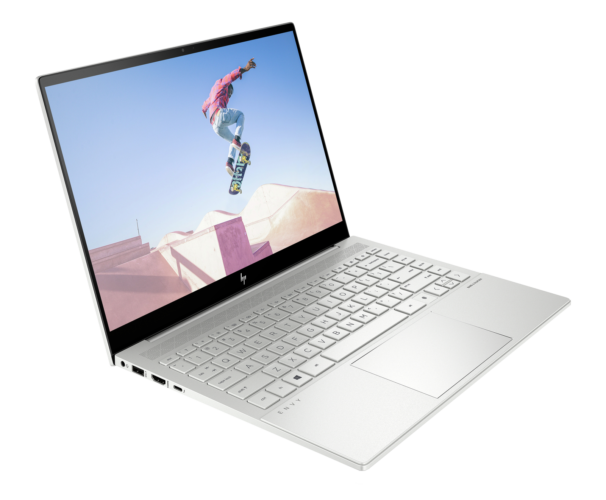
- Acer is updating the ConceptD creator lineup with the new ConceptD 3 Ezel, the all-metal ConceptD 5 laptop and the ConceptD 7 Ezel flagship. The ConceptD 7 Ezel features up to a GeForce RTX 3080 and the Pro model up to an NVIDIA RTX A5000 Laptop GPU, and Acer’s patented adjustable 15.6-inch 4K PANTONE-validated touchscreen display. The lineup has a wide selection of GPU options for any type of creator, ranging from the GeForce RTX 3050 Ti up to RTX 3080, and with options for professional GPUs such as the NVIDIA RTX A5000.
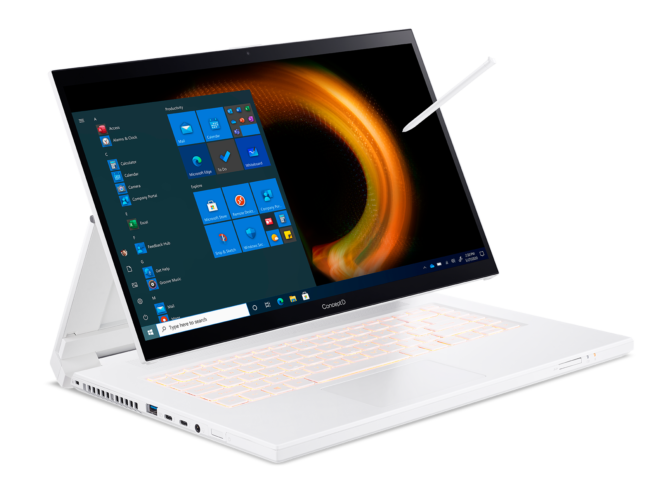
- MSI’s Creator Z16, Creator 17, WS66 and WS76 units have joined the NVIDIA Studio program. The Creator Z16 is an elegant and premium laptop powered by a GeForce RTX 3060 Laptop GPU. It sports a striking postmodern design with a True Pixel display with QHD+ resolution, DCI-P3 100 percent color gamut, factory-calibrated Delta-E <2 out of the box accuracy.
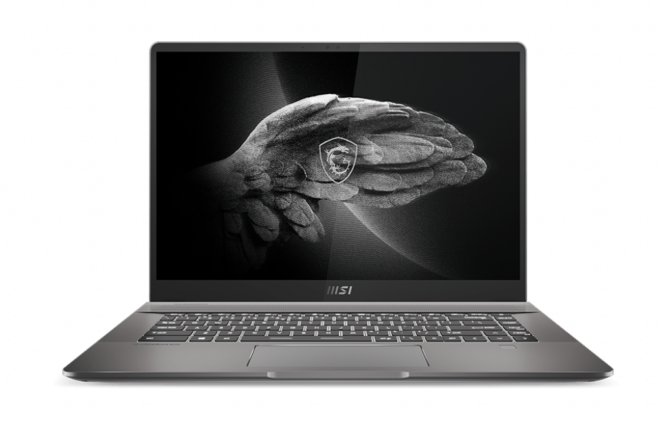
Omniverse Machinima Now in Beta
Gaming has been an inspiration to digital creators and artists for decades. Machinima, an art form started in the ’90s, uses real-time 3D technologies with game assets, visual effects and character animation to create short, humorous clips, or full-length movies. Using the latest RTX technologies, NVIDIA built Omniverse Machinima, an application that lets people collaborate in real time and create amazing animated video game stories.
Creators can import their own game assets or draw from Omniverse’s growing library, including content from Mount & Blade II: Bannerlord, Squad! and iconic NVIDIA tech demos. Advanced physics effects like destruction or fire can be applied with NVIDIA’s PhysX 5, Blast and Flow. Animate character movements using only a webcam with wrnch’s AI Pose and use simple audio tracks to animate character faces with Omniverse Audio2Face.
Upon completion, creators can access the Omniverse RTX Renderer for the highest quality output, enhanced with real-time ray tracing and referenced path tracing for interactive, bleeding-edge visuals.
Try out the Omniverse Machinima open beta and show us what you can do.
All Backed by NVIDIA Studio
These new GPUs and NVIDIA Studio laptops benefit from the RTX acceleration and optimization of the NVIDIA Studio ecosystem:
- Performance optimization in hundreds of creator apps, including 70+ apps optimized for RTX ray tracing and NVIDIA DLSS.
- NVIDIA Studio Drivers, optimized for content creation to provide the best performance and stability. Drivers are kept up to date automatically with GeForce Experience and NVIDIA RTX Experience.
- NVIDIA Studio Apps, which include NVIDIA Broadcast to turn rooms into home studios with AI filters for microphones and webcams, and the NVIDIA Omniverse collaborative 3D content creation platform.
- Configure creative apps with one-click in GeForce Experience to optimize them for your GPU.
Stay up to date on NVIDIA Studio by subscribing to the newsletter and following us on Facebook, Twitter and Instagram.
The post From Hours to Minutes with New Rendering Powerhouses: GeForce RTX 3080 Ti and 3070 Ti appeared first on The Official NVIDIA Blog.
NVIDIA Partners Unveil New Servers Featuring NVIDIA BlueField DPUs
Several of the world’s top server manufacturers today at COMPUTEX 2021 announced new systems powered by NVIDIA BlueField-2 data processing units. While systems with NVIDIA GPUs are already available now with the option of adding BlueField-2 DPUs, many applications and customer use cases may not require a GPU but can still benefit from a DPU.
The new servers from ASUS, Dell Technologies, GIGABYTE, QCT and Supermicro are ideal for enterprises seeking the additional performance, security and manageability that NVIDIA BlueField-2 DPUs offer.
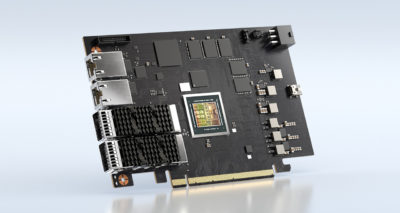
Servers that primarily run software-defined networking (for example, a stateful load balancer or distributed firewall), software-defined storage or traditional enterprise applications will all benefit from the DPU’s ability to accelerate, offload and isolate infrastructure workloads for networking, security and storage.
Systems running VMware vSphere, Windows or hyperconverged infrastructure solutions also benefit from including a DPU, whether running AI and machine learning applications, graphics-intensive workloads or traditional business applications.
NVIDIA BlueField DPUs shift infrastructure tasks from the CPU to the DPU, making more server CPU cores available to run applications, which increases server and data center efficiency. The DPU places a “computer in front of the computer” for each server, delivering separate, secure infrastructure provisioning that is isolated from the server’s application domain. This allows agentless workload isolation, security isolation, storage virtualization, remote management and telemetry on both virtualized and bare-metal servers.
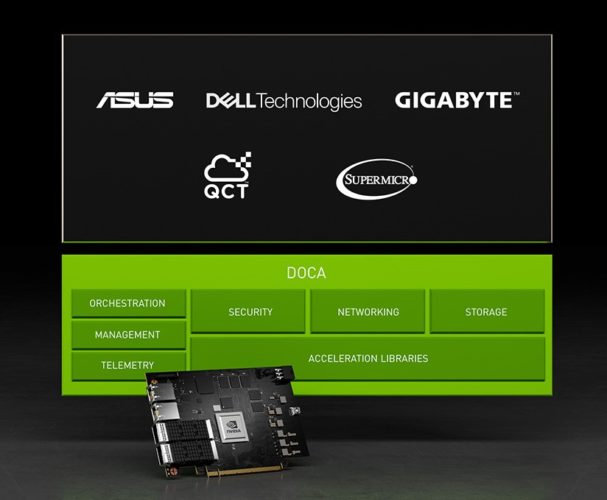
Customers and software makers can program BlueField DPUs easily using the NVIDIA DOCA SDK, the data-center-on-a-chip architecture that simplifies application development and ensures forward and backward compatibility with the NVIDIA BlueField-3 DPU, expected in 2022, and all future BlueField DPUs.
Enterprise customers are interested in deploying DPUs in many or even all of their data center servers. The availability of DPU-accelerated servers from leading system builders makes it simple and easy for customers to buy the market-leading BlueField-2 DPU pre-installed and pre-configured with their favorite servers.
BlueField-2 DPU-accelerated servers are expected this year, with several anticipated to submit to the NVIDIA-Certified Systems program when DPU server certification becomes available.
More information is available in the BlueField-2 DPU data sheet.
The post NVIDIA Partners Unveil New Servers Featuring NVIDIA BlueField DPUs appeared first on The Official NVIDIA Blog.
Hear from AWS Machine Learning Summit speakers
The event is over, but Amazon Science interviewed each of the six speakers within the Science of Machine Learning track. See what they had to say.Read More

